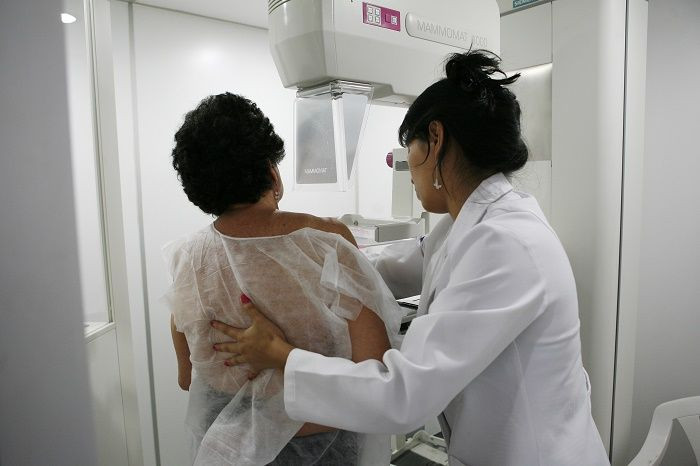Mammograms May Also Detect Heart Disease; Calcium Deposits In Breasts Also Likely To Be In Arteries

Mammograms are widely and often successfully used to detect breast cancer, the second leading cause of cancer death among U.S. women. Now, new research published in the journal JACC: Cardiovascular Imaging suggests it can help protect against an even bigger threat to women: cardiovascular disease.
Researchers believe breast calcification — small calcium deposits in the blood vessels found in breast tissue — is a good indicator of coronary arterial calcification, a very early sign of cardiovascular disease, Newsweek reported. Calcium narrows the arteries, which can increase the risk for heart attack. In breasts, though, calcium is very common and generally benign.
Doctors currently use CT scans to check for calcium deposits in arteries; however, scientists and doctors disagree that the cardiac scan is an effective screening method, according to the study. Meanwhile, mammography is more accepted — it is recommended annually for women over 40 years of age, and every other year for women 50 to 75 years old and women at high risk for breast cancer. Digital mammography in particular is more sensitive to the presence of calcifications, researchers said in a statement.
"Many women, especially young women, don't know the health of their coronary arteries," Dr. Harvey Hecht, lead author of the study and director of cardiovascular imaging at Mount Sinai St. Luke's hospital, said in a news release. "Based on our data, if a mammogram shows breast arterial calcifications it can be a red flag — an 'aha' moment — that there is a strong possibility she also has plaque in her coronary arteries.
For the study, researchers recruited a total of 292 women who had mammography and CT scans done within the past 12 months. Of those, 42.5 percent had calcium deposits show up on their mammogram. And 70 percent of women with these deposits also had calcium on their CT scans. Overall, 63 percent of those with breast calcification also had arterial calcification.
Researchers found that women with calcium deposits in their breast tissue were more likely to be older, have high blood pressure, and were less likely to be smokers. Interestingly, they also found that younger patients — those under 60 — had fewer false positives. If a younger woman had breast calcification, there was an 83 percent chance she also had calcium deposits in her coronary arteries.
Although more research and larger studies on this topic are needed to understand the significance of breast calcification, researchers said the findings show that mammograms could provide an opportunity to identify women with heart risks who ordinarily would not have been considered for cardiovascular screening.
Source: Margolies L, Salvatore M, Hecht H. Digital Mammography and Screening for Coronary Artery Disease. JACC: Cardiovascular Imaging. 2016.
Published by Medicaldaily.com



























